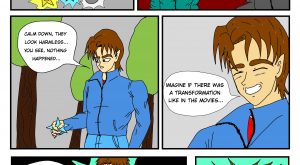Hunter x Hunter (manga)
Hunter × Hunter (pronounced “hunter hunter”) is a Japanese manga series written and illustrated by Yoshihiro Togashi. It has been serialized in Shueisha‘s Weekly Shōnen Jump since March 1998, although the manga has frequently gone on extended hiatuses since 2006. Its chapters have been collected in 36 tankōbon volumes as of October 2018. The story focuses on a young boy named Gon Freecss who discovers that his father, who left him at a young age, is actually a world-renowned Hunter, a licensed professional who specializes in fantastical pursuits such as locating rare or unidentified animal species, treasure hunting, surveying unexplored enclaves, or hunting down lawless individuals. Gon departs on a journey to become a Hunter and eventually find his father. Along the way, Gon meets various other Hunters and encounters the paranormal.
Hunter × Hunter has been a huge critical and financial success and has become one of Shueisha’s best-selling manga series, having over 79 million copies in circulation as of November 2021.
| Written by | Yoshihiro Togashi |
|---|---|
| Published by | Shueisha |
| English publisher | |
| Imprint | Jump Comics |
| Magazine | Weekly Shōnen Jump |
| English magazine | |
| Demographic | Shōnen |
| Original run | March 16, 1998 – November 26, 2018 (on hiatus) |
| Volumes | 36 |





